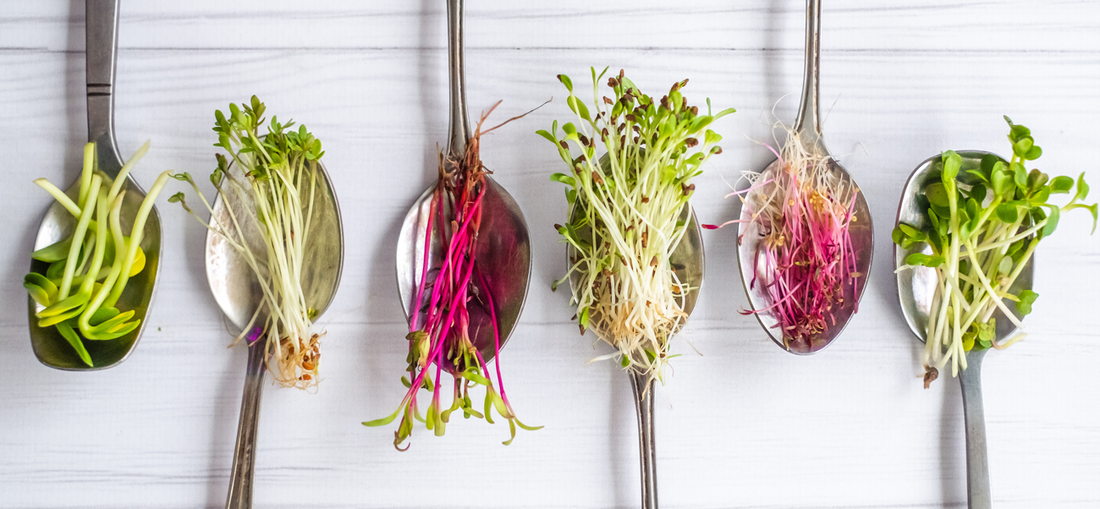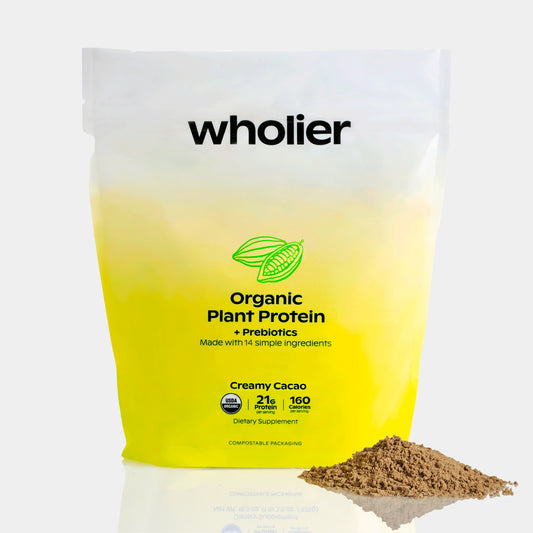
Microgreens: Tiny Greens with Massive Nutritional Benefits
Microgreens, as the name suggests, are miniature versions of fully matured green vegetables(1). Born out of the farm-to-table movement, these petite greens have stormed onto the scene of culinary arts and healthy living, with their delicate textures, robust flavors, and striking visual appeal(2). However, microgreens are not just scaled-down versions of their mature counterparts. They offer unique characteristics that distinguish them significantly.
What Are Microgreens?
Well, microgreens are essentially vegetable seedlings, harvested when they're about one to three inches tall, just after the first pair of true leaves appear, which typically is within 7-14 days post germination(3). In this growth stage, the plant is brimming with potential, with concentrated flavors and nutrients packed into its tiny structure. The short growing cycle allows for year-round cultivation of a wide range of microgreen varieties, including radish, broccoli, arugula, and beet greens, to name a few(4).
How Are Microgreens Grown?
Growing microgreens isn't as complicated as one might think. It involves sowing a dense layer of seeds in a shallow container with a thin layer of soil or a hydroponic medium(5). The seeds are then kept under controlled conditions of light, humidity, and temperature to germinate.
These tiny greens contain up to 40 times more nutrients than their mature counterparts.
Here's a quick rundown of the process: Seeds are sown in a flat container and lightly covered with soil. They're then watered thoroughly and placed in a location with adequate light and warmth. When the first true leaves develop, the greens are ready to be harvested. This typically involves cutting the stems just above the soil line with a clean pair of scissors(6).
What Are the Nutritional Benefits of Microgreens?
Now, here comes the interesting part. Despite their small size, microgreens pack a substantial nutritional punch. Believe it or not, these tiny greens contain up to 40 times more nutrients than their mature counterparts(7).
But what does the science say? A study published in the Journal of Agricultural and Food Chemistry found that, on average, microgreens contain 5 times the vitamins and carotenoids as their mature counterparts. Some microgreens varieties can reach up to 40 times, such as red cabbage, cilantro, and radish(8). These are not just any nutrients; they include vitamins like C, E, and K, along with essential carotenoids like beta-carotene.
Another comprehensive study in 2012 reported that microgreens are packed with antioxidants. These substances help protect your cells against damage by free radicals, reducing the risk of diseases such as heart disease and cancer(9).
Additionally, another study found that microgreens, such as red cabbage, cilantro, and garnet amaranth, are incredibly rich in vitamin C, vitamin K, and vitamin E. According to the research, these specific types of microgreens have 147%, 69%, and 238% more vitamin C, vitamin K, and vitamin E, respectively, than their mature counterparts(10).
So, to sum up, microgreens are more than just a food trend. They're nutrient powerhouses that can elevate the nutritional profile of your meals. By incorporating these miniature greens into your diet, you're not only enhancing the flavor and aesthetic appeal of your dishes but also boosting your intake of essential vitamins, minerals, and antioxidants.
Sources:
(1) Xiao, Z., Lester, G. E., Luo, Y., & Wang, Q. (2012). Assessment of vitamin and carotenoid concentrations of emerging food products: edible microgreens. Journal of Agricultural and Food Chemistry, 60(31), 7644-7651.
(2) Hui, Z., Yue, X., & Zhigang, X. (2020). Microgreens: A new culinary trend. Food Reviews International, 36(1), 1-16.
(3) Choe, U., Luo, Y., Li, G., Lee, J., & Benkeblia, N. (2018). Microgreens Production with Controlled Environment Agriculture and Hydroponics. Horticulturae, 4(4), 52.
(4) Kyriacou, M. C., Rouphael, Y., Di Gioia, F., Kyratzis, A., Serio, F., Renna, M., ... & De Pascale, S. (2016). Micro-scale vegetable production and the rise of microgreens. Trends in Food Science & Technology, 57, 103-115.
(5) Pinto, E., & Almeida, A. A. (2018). Microgreens: A New Culinary “Green” Revolution. Notulae Botanicae Horti Agrobotanici Cluj-Napoca, 46(2), 323-328.
(6) Brazaitytė, A., Sakalauskienė, S., Samuolienė, G., Jankauskienė, J., Viršilė, A., Novičkovas, A., ... & Duchovskis, P. (2015). The effects of LED illumination spectra and intensity on carotenoid content in Brassicaceae microgreens. Food Chemistry, 173, 600-606.
(7) Weber, C. F. (2017). Microgreens: Novel, Fresh and Functional Food to Explore All the Value of Biodiversity. Foods, 6(10), 86.
(8) Xiao, Z., Lester, G. E., Luo, Y., & Wang, Q. (2012). Assessment of vitamin and carotenoid concentrations of emerging food products: edible microgreens. Journal of Agricultural and Food Chemistry, 60(31), 7644-7651.
(9) Treadwell, D., Hochmuth, R., Landrum, L., Laughlin, W., & Dittmar, P. (2012). Microgreens: A new specialty crop. HS1195, UF/IFAS Extension, Gainesville, FL, USA.
(10) Weber, C. F. (2017). Microgreens: Novel, Fresh and Functional Food to Explore All the Value of Biodiversity. Foods, 6(10), 86.






